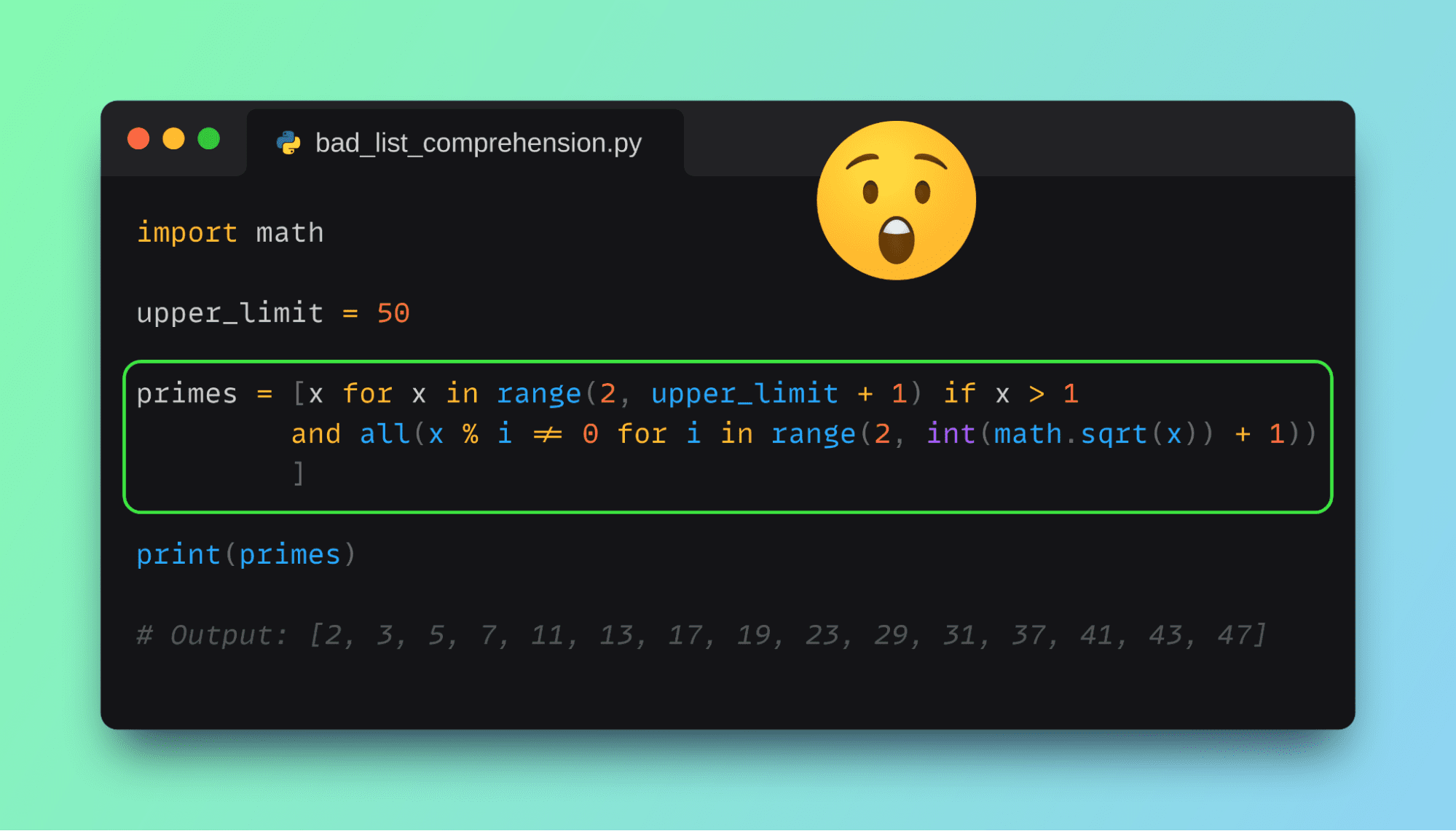Demystifying List Comprehensions: Python’s Elegant One-Liners 🐍✨
 Shrey Dikshant
Shrey Dikshant
Introduction

In Python, we often write loops to create lists, but what if I told you there’s a more elegant way to do this? Enter list comprehensions—a concise and expressive method for generating lists in Python. They might seem a bit daunting at first, but once you get the hang of them, you’ll find yourself using them everywhere.
What is a List Comprehension?
List comprehensions provide a syntactically compact way to generate lists. Instead of writing multiple lines of code with a for loop, you can accomplish the same task in just one line.
Syntax Breakdown
The basic syntax of a list comprehension is:

Expression: This is the value or operation to be applied to each item.
Iterable: The collection of items you’re looping through.
Condition (optional): A filter to include only items that meet a certain criterion.
Examples in Action
Basic Example:

- This creates a list of squares:
[1, 4, 9, 16, 25].
- This creates a list of squares:
With a Condition:

This filters out the odd numbers, leaving
[2, 4].
When to Use List Comprehensions
List comprehensions are great when you want to transform or filter a list in a single readable line. However, avoid using them for complex operations as it can make your code harder to read.
Subscribe to my newsletter
Read articles from Shrey Dikshant directly inside your inbox. Subscribe to the newsletter, and don't miss out.
Written by

Shrey Dikshant
Shrey Dikshant
Aspiring data scientist with a strong foundation in adaptive quality techniques. Gained valuable experience through internships at YT Views, focusing on operation handling. Proficient in Python and passionate about data visualization, aiming to turn complex data into actionable insights.